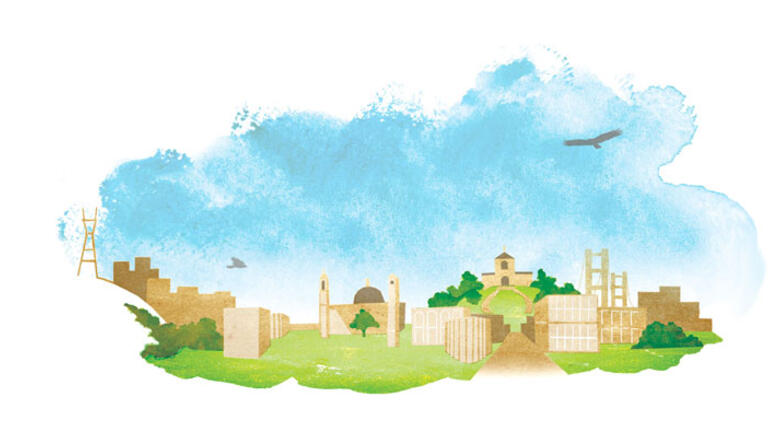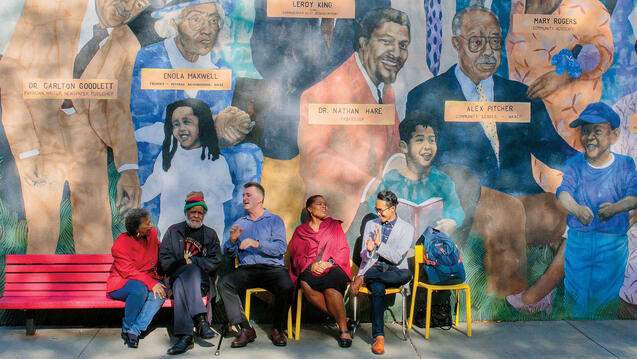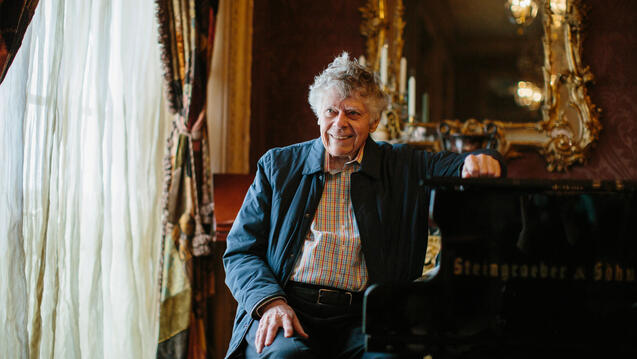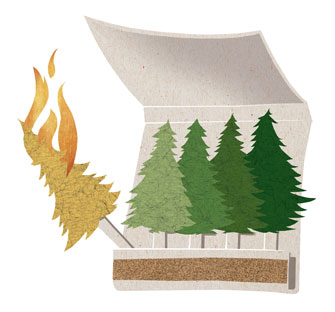

Global Warning
When a slab of ice the size of Delaware breaks off Antarctica, a single storm floods Texas with four feet of rain, and 97 percent of climate scientists agree that human activities are threatening our planet, climate change stops being a debate and becomes reality.
Scientists, researchers, and activists worldwide are working to halt climate change, and a growing number at the center of those efforts are USFers: a biologist who measures the effects of warming oceans on marine life, a CEO whose company is an international leader in recycling and composting, and a lawyer who wants California to pursue stricter restrictions on toxic pollutants, to name a few.
And while not all of these sustainability champions are Catholic or feel a religious call to do this work, they show a striking dedication to Pope Francis’ call to action, delivered in his encyclical on climate change in 2015. Mother Earth “now cries out to us because of the harm we have inflicted on her by our irresponsible use and abuse of the goods with which God has endowed her,” he warned.
“It is a moral imperative as human beings to, if you can make a difference, stand up and do so,” says Jessie Rountree MSEM ’14, a master’s in environmental management alumna who is the North American climate strategy manager at The Nature Conservancy. “I feel a responsibility to protect the world around me.”
In hot waters
One of the biggest problems with climate change is warming oceans, which has the potential to affect the biodiversity of some of Earth’s smallest organisms if temperatures increase by even a few degrees, says USF biology Professor Deneb Karentz.
In Antarctica, Karentz leads a research team that studies the impact of higher temperatures and light on phytoplankton. These tiny floating algae are the first link in the ocean’s food web, feeding krill that in turn feed animals like penguins, seals, and whales.
Sometimes called “the grass of the sea,” phytoplankton and their ilk produce an estimated 70 percent of the world’s oxygen — while absorbing heat-trapping carbon dioxide in the atmosphere.
“Although invisible to the human eye, phytoplankton are present in every drop of ocean water and essential to sustaining life in the oceans and providing breathable oxygen for the planet,” says Karentz, whose research is so well-known that Lake Karentz, in the Dry Valleys area of Antarctica, is named for her.
In addition to affecting sea life, warming oceans melt the Earth’s polar glaciers, cause coastal flooding and ocean acidification, and can even alter ocean currents and weather.
Karentz is dedicated to ensuring that scientists will be studying phytoplankton and Antarctica for years to come. For over 20 years, she has been part of a National Science Foundation training program that brings early career scientists to the coldest continent — where temperatures can reach -100 Fahrenheit — for them to learn how to investigate the impacts of climate change.
Alumna Bethany Goodrich ’11 got her start on such a trip. The experience laid the groundwork for her to earn a master’s degree in biodiversity, conservation, and management from the University of Oxford. Now, she’s the communications director for the Sitka Conservation Society in Alaska, which fosters sustainable natural resource development, renewable energy, and food security.
“My work with Deneb inspired the trajectory of my career,” says Goodrich, a biology alumna who took a lead role on Karentz’s research team’s award-winning outreach project called Mission Antarctica.
Wildfire watch
Rising temperatures not only lead to warming ocean waters, but to droughts that can devastate forests. By November, nearly 9 million acres had burned across the country, blowing past the 6.1 million acre average and challenging 2015’s record 9.7 million.

“Temperature increases raise the risk of natural ignition, which makes the forest more vulnerable to wildfire,” says John Dilger ’16, an environmental science alumnus who works at NASA’s Ames Research Center assessing the danger of forest fires in Lassen Volcanic National Park in Northern California.
Dilger uses satellite technology with geographic information systems (GIS) to assess the numbers of dead or dying trees in the park, and provides the data to experts so they know which areas are at the highest risk for fires.
He learned GIS conducting research with environmental management Associate Professor David Saah, director of USF’s Geospatial Analysis Lab.
Choking on toxins
Across the Pacific Ocean, environmental management Professor Stephanie A. Siehr has partnered with 20 cities in China, including the major cities of Guangzhou and Jinan, to tackle a key driver of climate change: carbon dioxide (CO2).
China has been called the world’s largest carbon emitter and the deadliest country for outdoor air pollution by the World Health Organization. To address the problem, Siehr collaborated with researchers in China and the U.S. to develop software that cities use to save energy and reduce gas emissions.
The software is aimed at cities because some want to move ahead even if the nation doesn’t, Siehr says. “It helps them inventory their energy and carbon emissions, and also does some benchmarking. They can look at their CO2 emissions compared to other cities to get a sense of their progress on becoming low carbon.”
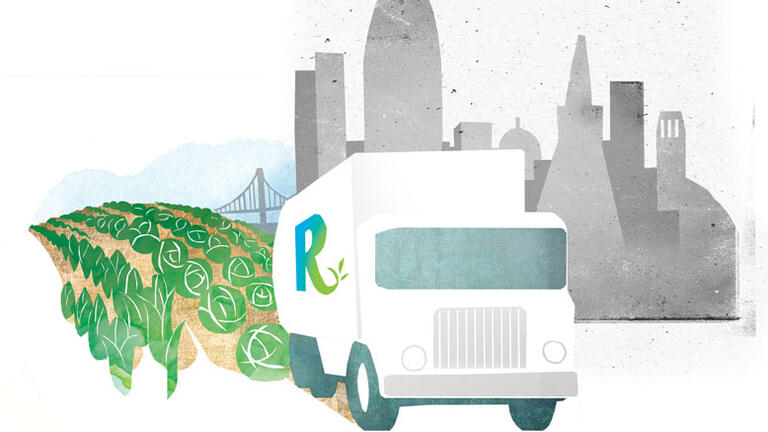
Transforming trash
Cities are also a major source of trash. Americans generate more than 250 million tons of it a year, more than any other country on the planet. It needs to go somewhere, so we bury it. But landfills give off methane, a gas that — while a distant second to carbon in pounds released into the atmosphere — is 21 times more damaging. That’s why San Francisco aims to ensure that only a fraction of the city’s waste ends up in landfills. More than 80 percent is recycled or composted, thanks in part to Recology, an employee-owned waste disposal company piloted by President and CEO Mike Sangiacomo ’71.
Recology has changed the industry with a number of historic firsts: It was the first to collect compost citywide in the U.S., the first to open a permanent facility for household hazardous wastes, and was an early adopter of using split-body trucks to collect both recyclables and garbage. The company is an international leader with industry experts traveling from nearly 100 countries for tours.
According to the Environmental Protection Agency, if all U.S. cities diverted as much trash to recycling or compost as San Francisco does, we’d see a sweeping reduction in methane emissions. And if cities replicated San Francisco’s compost collection program, we could offset 20 percent of the nation’s CO2 emissions.
“The key is sequestration,” Sangiacomo says. “Research shows that by fertilizing range and farmland with compost from cities, we can dramatically move the needle on the fight against global warming.”
Just one application of composted green waste boosts plant growth by 50 percent, according to environmental scientists working with the Marin Carbon Project. The plants, in turn, take CO2 out of the air, where it traps heat, and put it back in the ground.
Pollution solution
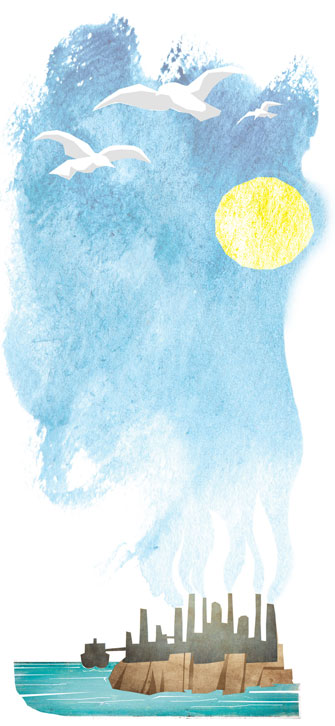
Across the bay from San Francisco, in Richmond, California, a Chevron oil refinery fire spewed toxic smoke into the air and over the city in 2012, sending more than 15,000 people to doctors’ offices and hospitals with cardiovascular and respiratory problems. If Chevron had been using pipes that complied with existing safety standards, the fire wouldn’t have happened, according to federal investigators.
That’s why there’s no substitute for good regulation, says environmental law Professor Alice Kaswan, who has testified before California lawmakers about air pollution. Leaving companies to regulate their own emissions doesn’t protect communities and can lead to environmental disasters.
Today, the facility is undergoing a major upgrade to bring it in line with state requirements, but only after being sued by the city. Helping vulnerable communities like Richmond is what motivates Kaswan to continue her regulatory research and analysis, and why she continues to search for ways to better protect communities from toxic pollutants like those released by Chevron.
It’s work, she says, that complements USF’s values. “Even though I’m not a Christian, I love teaching at a Jesuit school,” she says. “USF’s mission allows for a focus on understanding not only what the law is, but why it is that way, and to explore questions of what it ought to be.”
Red states, green energy
In June, The New York Times reported that five states — Iowa, Kansas, North Dakota, Oklahoma, and South Dakota — lead the nation in the percentage of energy they produce from wind power, a renewable source that doesn’t use fossil fuels or produce emissions. Most of those states are led by Republican governors and legislatures, and residents there elected Donald Trump president by wide margins.
Surprised? Don’t be. Enthusiasm for renewable energy doesn’t just come from coastal, blue states, says Jessie Rountree, the USF alumna who works at The Nature Conservancy.
As the North American climate strategy manager for the nonprofit, she’s in contact with people who are traditionally left out of the climate change conversation, including ranchers, landowners, and hunters. Many reside in those five states.
“They are so intimately tied to the land,” Rountree says. “Even if they wouldn’t call themselves conservationists, it’s a misstep in our broader environmental community to exclude them.”
Rountree’s work is part of the 50 State Climate Strategy, which jumpstarts climate change conversations and policies at the state level. She finds that talking about the science behind climate change doesn’t work with all audiences, so she takes a different approach.
“I talk about job creation, resiliency, national security, economic impact, and innovation. That works,” she says. “People are frustrated with federal politics and are looking to the state and community level for action and solutions.”
Fighting fracking
Tapping renewable energy sources over petroleum is something USF nursing and public health Professor Barbara Sattler supports. Sattler’s a nationally known crusader against fracking -— a method of extracting oil and natural gas from deep in the ground that pollutes the atmosphere, can poison groundwater supplies, and is blamed for causing earthquakes in parts of the country where temblors are unheard of.
“Once I saw how fracking was contaminating the environment and people’s communities, I worked with nurses, in collaboration with environmental and environmental justice organizations, on a campaign to raise awareness and encourage the states and federal government to regulate and prevent it,” Sattler says.
She was a founding member of the Alliance of Nurses for Healthy Environments in 2008 and says the group is “changing how nursing faculty incorporate climate change and environmental health issues into curriculum, because it is so clear that the environment is having an impact on human health.”
Since then, she’s expanded her campaign to other environmental issues and earlier this year produced a multimedia educational program about the role of nurses in combating climate change. It includes a 20-minute video that she made with alumna Michelle Ruiz ’03 that debuted at the American Public Health Association film festival in November.
Musical mayday
Master’s in environmental management alumnus Stephan Crawford MSEM ’11 spreads the word about climate change in a way few might imagine.
“I wanted to do something to help people better understand the urgency to act on climate change,” he says. “It’s a difficult issue for most to conceptualize, because they aren’t fluent in reading data. For many people, it remains in the backs of their minds — they don’t know why we need to act quickly.”
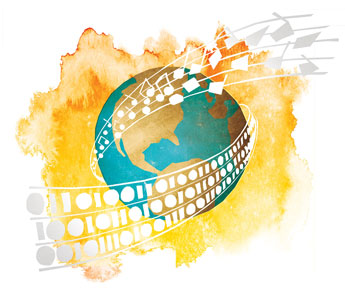
In 2014, he started The ClimateMusic Project, bringing together climate scientists, composers, and musicians to create music that tells the story of climate change based on rising temperatures and carbon dioxide levels over a span of 500 years. USF senior Lance Fernando ’18, a data science major with a minor in music, interns on the project and converts data into graphs for composers. Each performance is followed by an audience discussion with the composers and scientists.
After a performance at the Chabot Space and Science Center in Oakland, a woman recounted how she listened to the music and watched the data animations play out and the years tick off. “‘That’s how the music sounded when I was born, and this is how it sounded when my daughter was born, and this is how it might sound when my grand-daughter is born,’” Crawford remembers her saying. “For the first time, she was able to place what had previously been an abstract issue into the context of her own family’s history and future.”
Crawford is now reaching out to international composers to create pieces that reflect different cultures and music genres, and plans to publish performances online.
USF’s climate commitment
While these and other USFers are fighting for sustainability on the state, national, and global levels, USF is taking a stand as an institution.
This fall, the university launched a new energy systems management master’s program that prepares students for work in an industry that’s rapidly moving toward more sustainable practices, from solar power to electric vehicles to green buildings. Students learn energy science, technology, economics, policy, and law, while taking part in internships and research projects in the field.
USF also plans to host a climate conference to coincide with Gov. Jerry Brown’s landmark Global Climate Action Summit in September 2018.
“The conference will provide a great opportunity for the campus community to experience the international climate policy process firsthand, and raise the public profile of USF in the areas of energy and climate change,” says Associate Professor Jim Williams, who’s organizing the conference and is director of the Deep Decarbonization Pathways Project, an international research consortium working on low-carbon energy solutions.
Even before the pope’s encyclical on climate change, USF President Paul J. Fitzgerald, S.J., signed the American College and University Presidents Climate Commitment, pledging to reduce greenhouse gas emissions and expand research and education. Since then, USF has launched a new Office of Sustainability and has pledged to become carbon neutral by 2050.
After President Donald Trump withdrew the U.S. from the Paris Climate Agreement in June, states, cities, and organizations reaffirmed their commitment. Alongside those leaders, Fr. Fitzgerald joined We Are Still In — a national coalition to uphold the Paris Climate Agreement.
“This isn’t a new direction for USF, but rather a continuation,” says Richard Hsu MSEM ’13, the university’s sustainability coordinator. “USF was an early champion of renewable energy.”
The school installed solar thermal systems in the 1980s and solar photovoltaic panels in the early 2000s. Today, Hsu leads the efforts to reduce emissions and achieve carbon neutrality, as well as become a zero-waste campus through reuse, recycling, and composting. USF is also reducing water use through improved efficiency and conservation.
The university’s commitment to these issues stems from its social justice mission — what Hsu, like Rountree, calls a moral obligation.
“The social, economic, political, and environmental implications of climate change are significant and will impact everyone to some extent, but they will be particularly devastating to the most vulnerable populations of society that are least able to adapt: children, the elderly, and the poor,” he says. “We, therefore, have an ethical obligation to limit climate change and alleviate its impacts.”
